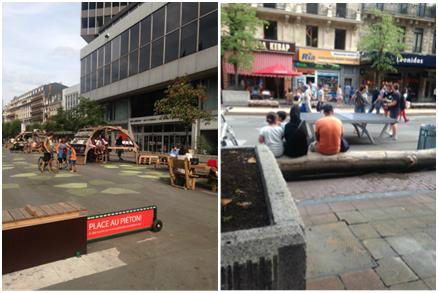Guest post by Dr Shima Beigi.
In this article, inspired by the movement of open spaces in cities across the world and resilience theory1, I argue that city and human resilience are tightly interlinked and it is possible to positively influence both through utilising the transformative power of open spaces in novel ways.
Human resilience makes cities more resilient
Future cities provide a fertile ground to integrate and synthesise different properties of space and help us realise our abilities to become more resilient. Rapid urbanisation brings with it a need to develop cohesive and resilient communities, so it is crucial to discuss how we can better design our cities. In the future, urban design must harness the transformative function of open spaces to help people explore new sociocultural possibilities and increase our resilience: resilient people help form the responsible citizenry that is necessary for the emergence of more resilient urban systems.
Cities are complex adaptive systems
Cities are complex adaptive systems which consist of many interacting parts with different degrees of flexibility, and open urban spaces hold the potential for embedding flexible platforms into future urban design; they invoke the possibility of adopting a different set of values and behaviours related to our cities, such as flexible structures designed to change how we imagine the collective social space or intersubjective space.
Transportation grids are for functional movement and coordination in cities, but open spaces can be seen as avenues for personal growth and development, social activities, learning, collective play and gaming (figure 1). They help us adjust and align our perception of reality in real-time and for free. All we need is our willingness to let go of the old and allow the new to guide us toward evolution, transcendence and resilience.

Open spaces also encourage another important process: the emergence of a fluid sense of one’s self as an integral part of a city’s design. Urban design can help citizens feel invited to explore and unearth parts of the internal landscape.
Mindfulness engineering and the practice of resiliencing
Drawing on my research on resilience of people, places, critical infrastructure systems and socio-ecological systems, I have collected 152 different ways of defining resilience and here I propose an urban friendly view of resilience:
resilience is about mastering change and is a continuous process of becoming and expanding one’s radius of comfort zone until the whole world becomes mapped into one’s awareness.
In this view, our continuous exposure to new conditions helps us align with a new tempo of change. Resilience is naturally embedded in all of us and we need to find those key principles and pathways through which we can practise our natural potential for resilience and adaptability to change on a daily basis. This is what I call 'mindfulness engineering' and the practice of 'resiliencing'. There is no secret to resilience; Ann S. Masten even calls it an 'ordinary magic'.
Building resilient and sustainable cities
Future cities provide us with the opportunity to increase our resilience. There is no fixed human essence and we are always in the state of dynamic unfolding. So the paradox for the future is this: the only thing fixed about the future is a constant state of change. As existential philosopher Søren Kierkegaard said, “the only thing repeated is the impossibility of repetition.” It is only through this shift of perspective to becoming in tune with one’s adaptation and resilience style that we can change our mental models and become better at handling change.
Featured image by Berthgmn on Wikimedia. Used under Creative Commons.
Sign up for email alerts from this blog, or follow us on Twitter.

2 comments
Comment by Jelenko Dragisic posted on
Really good blog. I like that idea of integrating new concepts into the idea of resilient city. That also may mean that there is room for re-imagining the idea that resilience is a foremost about adaptive capacities. The less discussed and yet critically important is the fact that we have now reached a point where majority of humanity lives is urban space. This may translate into better understanding how resilience can offer a competitive advantage to cities without replicating the industrial centuries' mistakes. Jelenko Dragisic, Founder - Global Resilience Collaborative, Australia
Comment by Dr. Shima Beigi posted on
Thank you very much for your comment, I totally agree with you that integrating key ideas behind resilience theory and science will give cities and urban settings competitive advantages and enhance their attractiveness.